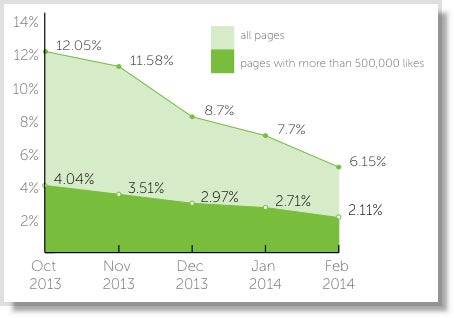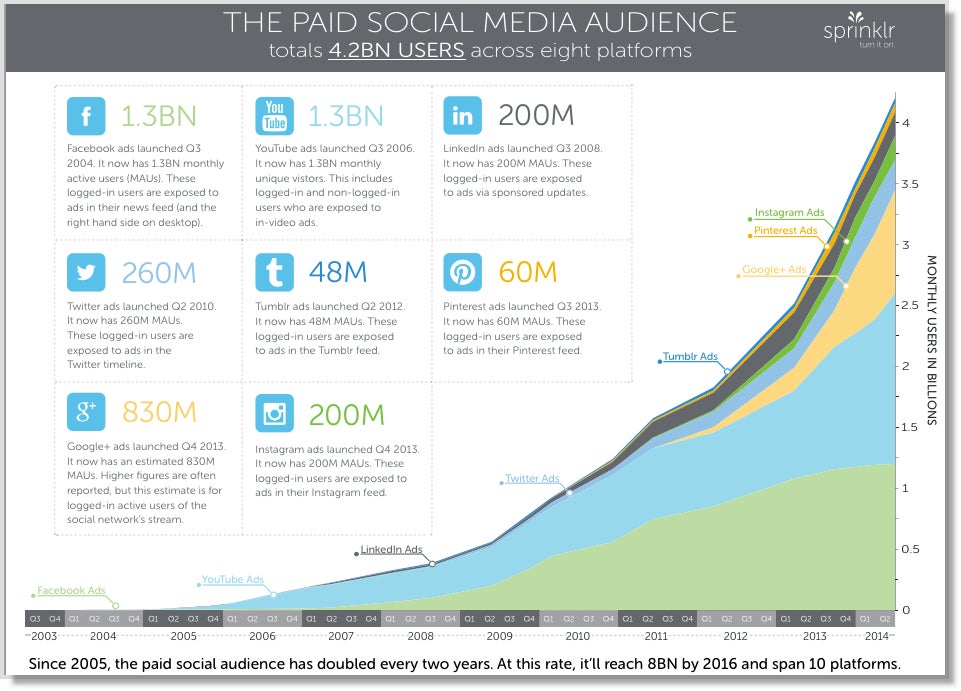
When I joined Facebook and Twitter in 2008 the key attraction was that you could gain attention and market on social media for free. There was little social media advertising available and it was usually not an easy task and not self service.
Brands started building tribes, followers and likes. Brands focused on growing “likes” on Facebook.
This allowed them to reach their customer for free without paying for a TV campaign, newspaper ad or radio advertising. The other attractive aspect of social media was that it also had global reach. Never before had there been a way to reach a global audience for free. It was unprecedented.
Smart phones added fuel to the fire
Added to the evolving mix was the increasing use of smart phones as they reached critical mass. This led to the rise of social networks that made mobile their focus. Instagram picked this trend and started as a mobile app and today is the fastest growing social network with a growth rate of 23% in just the last 6 months and is not far behind Twitter with over 200 million users.
Mobile and social has continued to be a manic mix that continues to add fuel to the fast moving social media marketing landscape.
Facebook “like gating” is gone
Just last week Facebook announced that it was changing the rules (again) on how brands can build their fans on their network.
So what happened?
They informed their customers and users that they were going to stop marketing apps “like gating.” So this means that apps and brands will no longer be able to “incentivize visitors to “like” a page to receive a discount, coupon or to even access free content.
Why are they doing this? Facebook’s take is they want to improve the value of a “like” so that only genuine fans are liking a page and not just to get a discount. A more cynical take on the news is that it competes with Facebook advertising.
Facebook in the last 12 months has continued to tighten the screws on organic reach with few as 2.71% of fans seeing your updates in their newsfeed.
Organic or free reach tactics are getting harder to achieve. Here is a chart showing the decline of organic reach in just 5 months.

Source: Sprinklr
The combination of more users, increased noise and declining organic reach means that paying for attention on social media is starting to become essential. It also means that you will need to be both smart and creative with your organic reach and marketing tactics.
8 paid social media platforms
As social media has moved from a perceived fad to an embedded trend that could no longer be ignored the evolution accelerated. Platforms started offering self service advertising. Today we have 8 of the major social networks offering social media advertising.

Source: Sprinklr
Fast facts on paid social media
Today there are 4.2 billion users across 8 of the top social networks. Here are the fast facts on paid social media advertising.
- Facebook has 1.3 billion monthly active users (MAUs)
- Facebook ads were initially offered in Q3, 2004
- Facebook ads are seen on the right side, in the news feed and on mobiles
- Google+ has an estimated 830 million active monthly users. (Note: This could include Gmail users)
- Ads were launched in Q4, 2013
- YouTube has 1.3 billion monthly unique users
- YouTube ads were launched in Q3, 2006
- It includes logged-in and non logged-in user who are exposed to in video ads
- Twitter now has 260 million monthly users (MAUs)
- Twitter ads launched in Q2, 2010
- The ads appear in the Twitter timeline, on mobile and on the left and right side banners.
- Linkedin has 200 million unique monthly users
- LinkedIn ads commenced in Q3, 2008
- Ads appear to logged in users via “sponsored” updates
- Instagram now has 200 million unique users every month
- Ads were launched in Q4, 2013
- Logged in users are exposed to ads in their Instagram feed
- Pinterest has 60 million MAUs
- Pinterest ads were launched in Q3, 2013
- Logged in users are are exposed to ads in their Pinterest feed
- Tumblr has 48 million monthly unique users
- Tumblr ads were launched in Q2, 2012
- Logged in users are exposed to ads in their Tumblr feed
Are you continuing to improve your social media marketing education?
What about you?
How are you evolving your social media marketing to counter Facebook’s declining organic reach? Are you trying other platforms such as Twitter?
Are you starting to pull out the credit card and advertise on Facebook?
Look forward to your stories and insights in the comments below.
This article was originally published by Jeff Bullas
3040 Views












